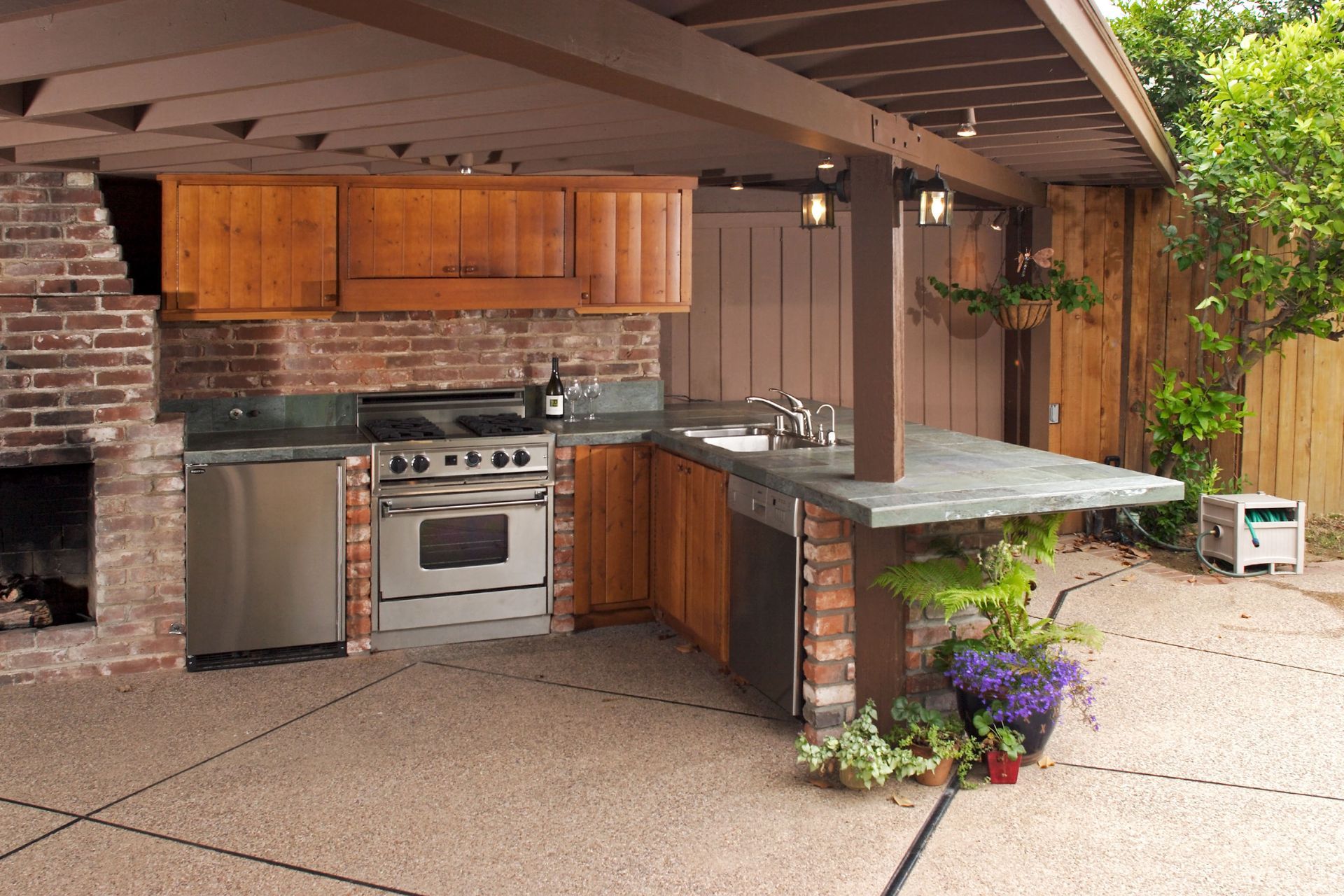6 Signs Your Gas Stove Needs Repair
Gas stoves are a staple in many homes, known for their efficiency and precise temperature control. However, like any appliance, they require maintenance and can develop issues over time. Recognizing the signs that indicate your gas stove may need repair can save you from costly replacements and ensure safety in your home. In this article, we will explore various indicators that your gas stove might need professional attention. By understanding these signs, homeowners can address minor issues before they escalate, maintaining both the safety and functionality of their kitchen appliances. Partnering with trusted appliance repair services helps extend the life of your stove and keep your kitchen safe.
1. Detecting a Persistent Gas Smell
A persistent gas smell is one of the most obvious signs that something might be wrong with your gas stove. Gas leaks are extremely dangerous and should be taken seriously to prevent potential hazards, such as fires or explosions. This smell is usually caused by an unintentional release of gas from the supply line or stove connections. When you notice a gas smell, it's crucial to evacuate the area immediately and not attempt to fix the issue yourself because sparks from electrical appliances could ignite the gas. Calling a professional to inspect and resolve the gas leak is imperative for ensuring the safety of everyone in the household. Relying on experienced appliance repair services ensures these issues are handled safely and effectively.
If you detect a gas smell, it is crucial to take immediate steps to ensure your safety. First, ventilate the area by opening windows and doors to allow the gas to dissipate. Avoid using any electrical devices, including light switches and burners, as they could trigger a spark. After ensuring that everyone is out of danger, contact your gas provider and an appliance repair technician to assess and address the issue. According to InterNACHI, gas ovens tend to have a lifetime of between 10 and 18 years before they need replacing; gas ranges have a life expectancy between 15 and 17 years, emphasizing the importance of regular maintenance and timely repairs. Following these steps minimizes risks and ensures that your stove functions safely and efficiently. Choosing professional appliance repair services also provides peace of mind that problems are fixed properly.
2. Identifying Irregular Flame Color
Gas stove flames should ideally be a steady blue color, which indicates proper combustion. A blue flame means that the correct air-to-gas ratio is being achieved, and the stove is functioning efficiently. If you notice your flames are yellow, orange, or flickering, it could indicate an issue that needs addressing. Yellow flames often suggest incomplete combustion, which can lead to dangerous by-products like carbon monoxide. Ensuring a consistently blue flame is crucial for both safety and efficiency in your kitchen. This is another scenario where professional appliance repair services can quickly diagnose and resolve the problem.
Yellow flames can be concerning as they often indicate a problem with the stove’s air-to-gas ratio. This usually happens when there is insufficient air mixing with the gas during combustion. Blocked air inlets, dirty burners, or misaligned components can cause such issues. It is essential to clean the burners regularly and check the air inlets to ensure they are not clogged with debris. Addressing these simple maintenance tasks can often resolve the issue without professional intervention.
Orange flames, on the other hand, can result from dust or other particles mixing with the gas. These flames might not be as consistent an indicator as yellow flames but still warrant investigation. Cleaning the burners and checking for any obstructions can clear up this problem. However, if the issue persists, professional assessment is advisable. Ignoring such flame irregularities is risky as it can lead to long-term damage to the stove and pose health risks due to improper combustion.
3. Troubleshooting Burners Not Igniting
When your burners fail to ignite, it can disrupt your cooking routine and may indicate deeper issues with your stove. Ignition problems can stem from a variety of causes, including faulty igniters or electrical connections. Sometimes, food debris or grease can accumulate and block the burner ports, preventing proper ignition. Regular cleaning and maintenance of the burners can help alleviate these issues and ensure smooth operations. If problems persist, it may be time to consult a professional for a thorough inspection from reliable appliance repair services.
The inspection of burner ports should be part of your regular maintenance routine to prevent ignition issues. Blockages caused by food spills or debris can impede gas flow, making it hard for the burner to ignite. Cleaning the burner ports with a soft brush and mild detergent can help remove any obstructive materials. Should these efforts not solve the problem, evaluating the condition of the igniter and considering replacement becomes important. Having a functional and reliable ignition system is crucial for efficient stove operation and maintaining safety in the kitchen.
4. Addressing Strange Noises From the Stove
Unusual noises coming from your gas stove can be alarming and often indicate underlying mechanical issues. Sizzling, popping, or hissing sounds are not typical behaviors and warrant further investigation. Such noises might signal problems with gas flow or burner faults. Monitoring when these sounds occur, such as during ignition or while cooking, can provide clues about the root cause. Addressing noisy components ensures the longevity and safe function of your stove.
Sometimes, the strange noises are due to airflow blockages or improper venting. Ensuring the vents and burner openings are free from obstruction will facilitate smooth gas flow and combustion. Regularly cleaning these areas can prevent debris buildup and maintain efficient operation. If noise persists, consulting a professional to inspect more complex mechanisms may be necessary. Quick and decisive action when encountering unfamiliar stove noises is vital to maintaining safety and preventing further complications.
5. Solving Uneven Cooking Results
Uneven cooking results can often suggest issues with heat distribution or burner functionality. When food cooks inconsistently, it may indicate problems with the burner flames or dirty components affecting performance. Typically, uneven heat distribution can stem from misaligned burners or dirty grates. Regularly inspecting and cleaning the burners and grates can help tackle these issues. Solving uneven cooking problems ensures better food quality and a more pleasant cooking experience.
Dirty burners are a commonplace yet significant factor contributing to uneven cooking outcomes. Grease, food residue, and other buildup can obstruct gas flow and heat production. Ensuring that burners are cleaned regularly with appropriate materials can rectify this issue. Keeping your stove free of unnecessary debris not only improves cooking results but also prevents long-term damage. Regular maintenance like this extends the lifespan of your appliance, making it both a safer and more productive kitchen tool.
6. Repairing a Faulty Oven Thermostat
The thermostat is a critical component of your oven as it regulates temperature to ensure proper cooking conditions. Symptoms of a malfunctioning thermostat include significant discrepancies between set and actual oven temperatures. Inconsistent heating or an inability to maintain a stable temperature can ruin your cooking efforts and may lead to under- or overcooked meals. Diagnosing thermostat issues promptly is essential to avoid frustration and improve oven performance. Regular testing and calibration are key strategies for maintaining thermostat functionality.
When faced with a faulty thermostat, the choice between DIY repair and calling a professional depends on your comfort and expertise in handling appliance repairs. DIY thermostat replacement is feasible if you have the right tools and understand the components of your stove. However, many elect to utilize professional services to both identify and replace the malfunctioning thermostat, which can prevent further damage. Trusted appliance repair services can ensure the job is done correctly and safely.
Recognizing the signs that your gas stove requires repairs can greatly enhance safety, efficiency, and the lifespan of your appliance. Timely attention to issues such as gas smells, unusual flame colors, ignition problems, noise disturbances, uneven cooking, and malfunctioning components prevents potential hazards and costly replacements. Regular maintenance and understanding how your stove operates are essential to keep it in top condition. By addressing the problems outlined in this article, you can ensure a safer and more efficient kitchen environment. Actively maintaining your gas stove leads to years of reliable service and premium functionality. When you need dependable gas stove repairs, trust the professionals at Action Appliance. Contact us today to schedule your service and keep your kitchen running safely and smoothly with the help of our dedicated appliance repair services.







Share On: